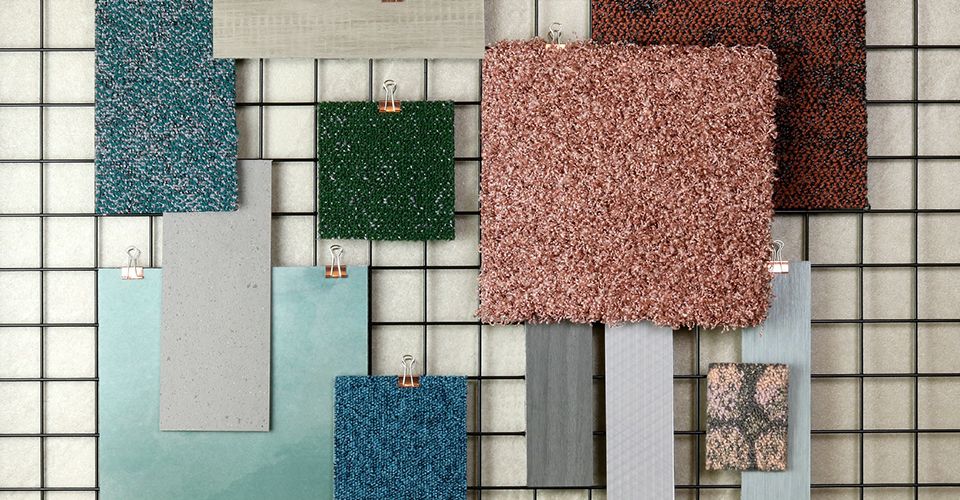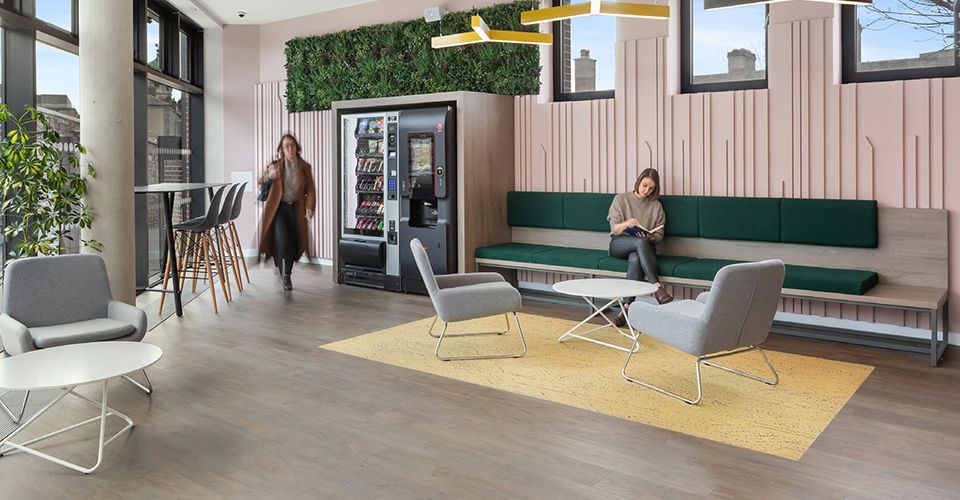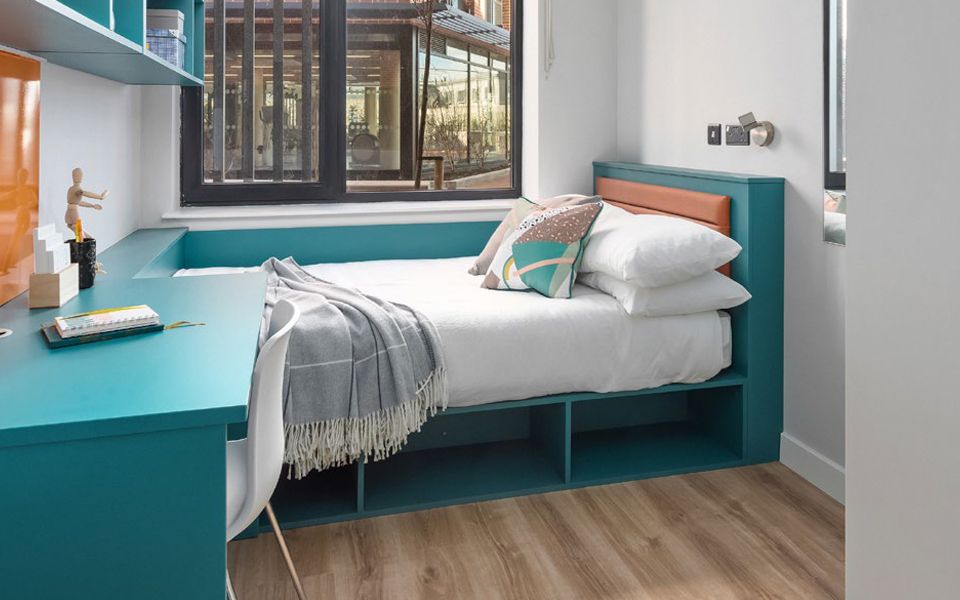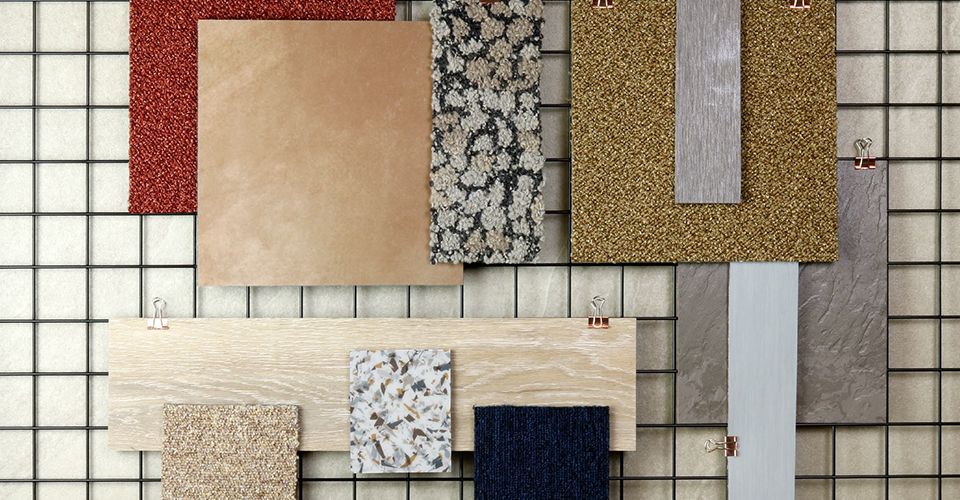The design of education spaces is fundamental to student wellbeing and productivity. As students and staff return to in-person learning, there’s never been a better time for universities to make sure campuses are best supporting those who use them. Having become used to home comforts, students’ expectations of learning spaces have altered. We know they are now looking for warm, welcoming spaces that help to alleviate anxieties and provide comfort, while also sparking creativity and encouraging collaboration.
There are four key spaces within a typical campus: social, public, learning, and living. Our Interface Concept Design Team has curated themed palettes that build a sense of home through flooring in each of these spaces. Arranged by colour group, these palettes offer our carpet tile, LVT and nora® rubber flooring collections, to support practical and effective space design.

Project: University of Surrey Design: Morgan Lovell Photography: Philip Vile Product: Look Both Ways LVT
Texture, tone and natural influence
The desire of students and educators to bring familiar textures and colours into their learning environment is advancing. Known as the ‘resimercial’ trend – the fusing of residential and commercial aesthetics – it provides designers with an extended palette combining home styling with durability and the functional demands of a commercial setting.
Using soft, neutral colours with some accent shades provides a sense of warmth to learning and living spaces. Ice Breaker in Sandstone and Woven Gradience in Pearl perfectly complement the muted green and blue tones of Touch & Tones II in Forest and Heuga 727 in Turquoise to support harmony and balance. Imitating nature in your flooring choices, known as biophilic design, is proven to help students and staff feel grounded and more connected to the world, which in turn can reduce stress, improve productivity and inspire creativity.

Palette One
In line with the trend for more domestic-inspired interiors within education spaces, we are also seeing increased use of terracotta and blush tones, as well as soft textured flooring solutions, which are complemented by décor and furniture choices such as natural wood desks, planting and panelling.

Project: Mezzino Student Living, Ireland. Product: LVT Level Set in Textured Woodgrains Antique Maple; Visual Code
The LVT Level Set collection in Textured Woodgrains can also be paired with rug inserts to create a homely feel, particularly within breakout and living areas, encouraging students to come together, relax and socialise. Bold and bright tones are not lost; using bright yellows and greens as accent shades can add points of interest across the floor.
Supporting individuality
Whilst resimercial and biophilic schemes are being incorporated widely across social spaces on campus, it’s important to acknowledge individual style. Within private accommodation spaces, the use of one or two products with a simple design and a muted colour palette provides the perfect neutral backdrop for students to personalise with accessories to suit their own taste. A durable, high quality, low maintenance flooring solution, our Studio Set LVT in Pewter is ideal for such spaces and also offers Sound Choice™ backing as standard.

Project: Mezzino Student Living, Ireland. Product: LVT Level Set in Textured Woodgrains Antique Oak
More colourful products like Ice Breaker in Seafoam and Touch & Tones II in Terracotta can be used to give living spaces a lift, particularly within corridors where it is useful to differentiate buildings with a repeated layout on each floor to enable wayfinding.

Palette Four
Designing for the future
There is growing pressure for education establishments to report their achievements against strict sustainability objectives, and the careful selection of materials and products used within education spaces is one way of helping to deliver against these ambitions.
To support designers, educators and their teams to make the best decision, we ensure all of our products are carbon neutral throughout their entire lifecycle through our Carbon Neutral Floors™ programme. This means by choosing Interface you are making a climate conscious choice. All of our carpet products also feature our non-vinyl, non-bitumen CQuest™Bio backing as standard to greatly reduce the carbon footprint of interior spaces. Plus, our LVT and carpet tile collections are optimized for glue-free installation with our TacTiles® connectors which have virtually zero VOCs. This means that as well as creating ‘home from home’ designs and aligning with emerging trends, our products can help universities contribute to a climate positive future.
Download the full Higher Education folio.